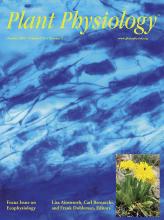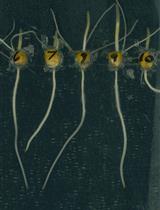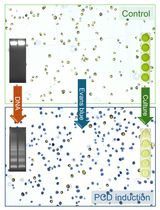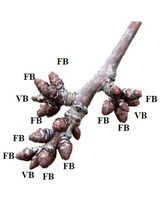- EN - English
- CN - 中文
Assessing Plant Tolerance to Acute Heat Stress
植物对急性热胁迫耐受性的评估
发布: 2017年07月20日第7卷第14期 DOI: 10.21769/BioProtoc.2405 浏览次数: 13015
评审: Marisa RosaMagdalena MigockaAnonymous reviewer(s)
Abstract
It is well-established that plants are able to acclimate to temperatures above or below the optimal temperature for their growth. Here, we provide protocols for assays that can be used quantitatively or qualitatively to assess the relative ability of plants to acquire tolerance to high temperature stress. The hypocotyl elongation assay described was developed to screen for mutants defective in the acquisition of tolerance to extreme temperature stress, and other assays were developed to further characterize mutant and transgenic plants for heat tolerance of other processes or at other growth stages. Although the protocols provide details for application to Arabidopsis thaliana, the same basic methods can be adopted to assay heat tolerance in other plant species.
Keywords: Thermotolerance (耐热性)Background
It is well-established that plants are able to acclimate to temperatures above or below the optimal temperature for their growth, and many studies have identified genes necessary for, or associated with temperature acclimation. Typically, acclimation requires a period of exposure to a non-damaging temperature treatment, either above optimal to induce heat tolerance, or below optimal to induce cold or freezing tolerance. In Arabidopsis and other plants, freezing tolerance can be achieved within a period of 24 h of cold treatment (cold hardening), with maximum freezing tolerance occurring after several days of hardening (Gilmour et al., 1988; Thomashow, 1999). Tolerance to normally lethal or damaging high temperatures can develop more rapidly, within a few hours. This type of rapid heat acclimation was extensively documented by Yarwood (1967) and others in the 1960s using a variety of plant species. Research on high temperature acclimation accelerated when it was recognized in the early 1980s that all organisms, including plants, responded to heat stress with a ‘heat shock response’ that involves transcription and translation of a conserved set of ‘heat shock proteins’ (Lindquist, 1986; Vierling, 1991). Work with soybean seedlings, similar to the earlier work of Yarwood, defined a simple assay for hypocotyl elongation that allowed investigation of the relationship of heat acclimation to the heat shock response (Lin et al., 1984). This assay was then extended to Arabidopsis and used to identify mutants altered in heat acclimation, in both forward and reverse genetic screens (Hong and Vierling, 2001; Larkindale et al., 2005; Kim et al., 2012). Other assays for heat acclimation were also developed and used for mutant screening in Arabidopsis, including heat acclimation of greening of dark grown seedlings (Burke et al., 2000) and seedling viability (Wu et al., 2013).
Because plants can experience rapid daily temperature cycles, it is perhaps not surprising that heat tolerance can be acquired on a time scale consistent with diurnal changes in temperature, and that acclimation treatments afford maximal protection if they are administered 24 h or less before the imposition of damaging heat stress. It is also important to recognize that plant responses to temperature vary significantly with the length and severity, as well as the developmental timing of the temperature treatment. A review by Yeh et al. (2012) provides an excellent description of how variations in temperature treatments can affect phenotypic outcomes. Here we describe in detail basic methods that have been used to assess the ability of plants to acclimate to severe high temperature using Arabidopsis thaliana. Done precisely, these assays can provide quantitative information on the relative heat tolerance of different plant genotypes or of plants grown under different conditions. They can also readily be developed to use with other plant species.
Materials and Reagents
- 100 x 15 mm square Petri dish with grid (Simport, catalog number: D210-16 )
- Any brand sterile pipette tips that fit pipettors in 3 above
- Parafilm (Bemis, catalog number: PM996 )
- Aluminum foil (any brand)
- 100 x 15 mm round Petri dish (Fisher Scientific, catalog number: S33580A )
- Filter paper
- Arabidopsis thaliana Columbia-0 seeds, hot1-3 mutant seeds (ABRC, catalog number: CS16284 )
- Household Bleach (Clorox or any brand that contains 5.25% sodium hypochlorite, 6 month shelf-life when stored at room temperature)
- Triton X-100 (Sigma-Aldrich, catalog number: T8787 )
- MS basal salt mixture (Sigma-Aldrich, catalog number: M5524 ), store at 4 °C
- 2-(N-Morpholino) ethanesulfonic acid (MES) hydrate (Sigma-Aldrich, catalog number: M8250 )
- Phyto agar (Sigma-Aldrich, catalog number: A1296 )
- Sucrose (Fisher Scientific, catalog number: S5-500 )
- Potassium hydroxide (KOH) (Fisher Scientific, catalog number: P250-500 )
- Seed sterilization solution (see Recipes)
- Half-strength MS agar media (see Recipes)
Equipment
- Any brand of pipettors to dispense 2 to 20 μl, 20 to 100 μl, and 0.1 to 1.0 ml (e.g., Eppendorf, catalog numbers: 4924000037 , 4924000061 , 3123000063 ; or comparable)
- Growth chamber (Percival Scientific, model: AR41L2 )
- Oven incubator (Precision, model: Thelco incubator 3DM , catalog number: 51221120)
- Sharp pen
- Scale loupe (CWJ, Peak, model: 1983 10x Scale Loupe )
- Dissecting scope (Leica Microsystems, model: Leica MZ6 or comparable)
- Leveling table (SP Scienceware - Bel-Art Products - H-B Instrument, catalog number: H18310-0000 )
- 1 L glass bottles (Fisher Scientific)
- Autoclave
Software
- Microsoft Excel
- ImageJ (optional)
Procedure
文章信息
版权信息
© 2017 The Authors; exclusive licensee Bio-protocol LLC.
如何引用
Readers should cite both the Bio-protocol article and the original research article where this protocol was used:
- Kim, M., McLoughlin, F., Basha, E. and Vierling, E. (2017). Assessing Plant Tolerance to Acute Heat Stress. Bio-protocol 7(14): e2405. DOI: 10.21769/BioProtoc.2405.
- McLoughlin, F., Basha, E., Fowler, M. E., Kim, M., Bordowitz, J., Katiyar-Agarwal, S. and Vierling, E. (2016). Class I and II Small Heat Shock Proteins Together with HSP101 Protect Protein Translation Factors during Heat Stress. Plant Physiol 172(2): 1221-1236.
分类
植物科学 > 植物生理学 > 非生物胁迫
植物科学 > 植物生理学 > 植物生长
您对这篇实验方法有问题吗?
在此处发布您的问题,我们将邀请本文作者来回答。同时,我们会将您的问题发布到Bio-protocol Exchange,以便寻求社区成员的帮助。
提问指南
+ 问题描述
写下详细的问题描述,包括所有有助于他人回答您问题的信息(例如实验过程、条件和相关图像等)。
Share
Bluesky
X
Copy link












